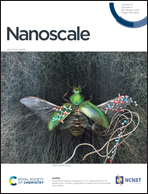Functional supramolecular gels based on pillar[n]arene macrocycles
Abstract
Supramolecular gels constructed from low-molecular-weight gelators via noncovalent interactions have received increasing attention. The rapid development of stimuli-responsive supramolecular gels with attractive properties is highly desirable to meet the ever-growing demand of materials science and chemistry. The inherent reversible and dynamic nature of noncovalent interactions in supramolecular gels endows the materials with sensing, processing, and actuating functions in response to specific environmental changes and offers them great potential in flexible biomaterials and intelligent devices. In particular, pillar[n]arenes with symmetrical pillar-shaped architectures have been recognized as an emerging class of synthetic macrocycles after crown ethers, cyclodextrins, calixarenes, and cucurbiturils, and proven to be excellent candidates for the fabrication of functional supramolecular gels due to their many advantages including facile synthesis, diverse functionalization, and appealing host–guest properties. This review provides a comprehensive overview of recent progress in supramolecular gels involving pillar[n]arenes and their derivatives as synthetic macrocyclic arenes, from the viewpoints of the synthetic approach, controllable assembly, stimuli-responsiveness, and functions. Perspectives of this burgeoning field of research are also given at the end.
![Graphical abstract: Functional supramolecular gels based on pillar[n]arene macrocycles](/en/Image/Get?imageInfo.ImageType=GA&imageInfo.ImageIdentifier.ManuscriptID=C9NR09532B&imageInfo.ImageIdentifier.Year=2020)
- This article is part of the themed collections: 2020 Nanoscale HOT Article Collection, Recent Review Articles and 2019 Nanoscale HOT Article Collection


 Please wait while we load your content...
Please wait while we load your content...